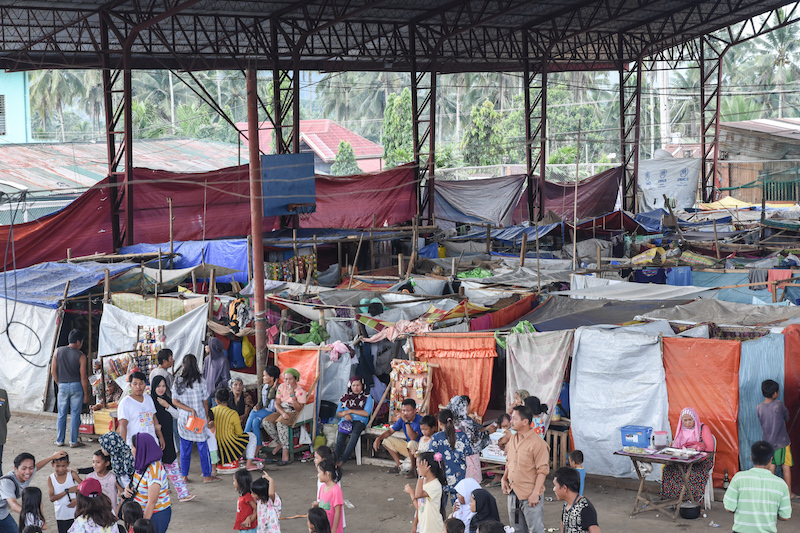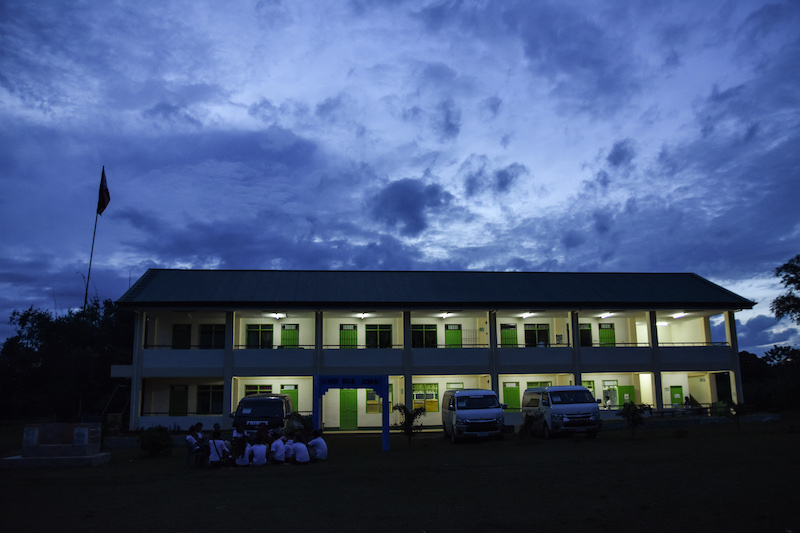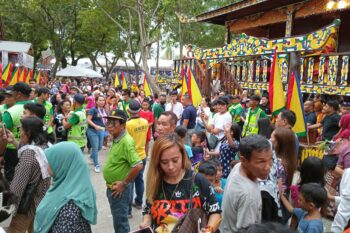Kidapawan to Lanao.
It is still dark outside the community health center. Two shiny vans are parked nearby, their drivers chatting to kill time. Inside the vans are bags, herbal medicines, hand towels and cloths, thermoses, a stove, and donated organic food from farmer-friends. These are the meager resources which Creating Sinag Within will bring to its second relief mission.
Thirty one volunteers, made up of doctors, nurses, therapists, social workers, teachers, documenters, organizers and myself carry healing modalities while we file into the van on a ten-hour-journey to Marawi. This mission is lean because it relies mostly on donated goods instead of hard cash. But as they say, the show must go on.
The third van with the other volunteers has gone a day in advance to scout for a place big enough to accommodate the Creating Sinag Within team. They drive around all day to find a space that is for free. For a long time, there is no word from them. However, as we roll into Cagayan de Oro City, we hear of the good news — the team can stay in a school.
Meanwhile, in Iligan City, our vans stop for lunch. For P100, a seaside restaurant places five tables side by side to allow all of us riding the vans to eat our packed lunch of chicken adobo, vegetables, lumpia and rice wrapped in banana leaves. Ah, what blessing to eat food cooked by some of our teammates. They stayed up late the previous night to prepare the simple fare. And so our whole team begins its mission with a meal by the glistening ocean.
After we finish eating, we wash the plates and freshen up. Then it is on to get vehicle security passes, gasoline, plus some pails and buckets which we load on to the already crammed vans. We arrive at a checkpoint at the border of Cagayan and Lanao. Traffic is miles long. Yet not a beep can be heard amidst the noisy engines and thick fumes. Our Creating Sinag Within vans quickly pass through, thanks to the security passes displayed on our dashboards.
 Just another day in the covered-court home of evacuees. When it rains it pours and pools of water make sleeping impossible. Photo by Louise Far
Just another day in the covered-court home of evacuees. When it rains it pours and pools of water make sleeping impossible. Photo by Louise Far
It is nighttime when we get to the school, our home for the next few days. A guard opens the gate and apologizes for the blackout. “It happens every night,” he says, “but the electricity normally returns after several hours.” The night sky sparkles as the vans drive into a big field past a small stage. The vehicles aim straight for the classrooms where Suli, one of the Emergency Pedagogy facilitators, is standing waving her cellphone’s flashlight. “Welcome to Pantar!” she greets us. Everybody in the van steps out and hugs her. This is the first time our whole team has come together.
In the two classrooms for males and females, floors have been swept, chairs are up against the walls, and mats and sleeping bags already spread out. We add our belongings and plop down. In the hallway the cooking team is figuring out how to attach the newly bought gas tank to the stove. I’m skimming through the impressive song book with English and Tagalog songs meticulously translated into Meranao. Laughter and singing in rounds reverberate through the hallway. “Bim bam, bim bam, biribiribam, biribam, biribiribam bim bam…” It’s a festive first evening and spirits are high. We devise a way to rotate responsibilities assigning a leader of the day to facilitate the smooth running of meetings after dinner and the accomplishments of community tasks like going to the market, cooking, and washing dishes.
The next day, we visit the first evacuation center and find it’s in a covered court. Beside it, on a hill, is the barangay hall that we turn into a therapy room for female patients while the tent across is turned into a therapy room for male patients. We neatly arrange mats with pillows and blankets beside each other. For privacy we tie ropes and hang on them floor-length cloths which gently sway in the breeze. Outside, on the barangay hall’s veranda, the doctors have set up tables, and have arranged chairs in a line which extend into the garden all the way to the registration table.
I leave the medical team, walk out several meters, and look down at the covered court where there’s a maze of makeshift rooms. Their walls and roofs are made of recycled cloth, sacks, and tarpaulins. I walk down to get a better look. Each room is about two square meters wide, depending on how many members a family has. Inside each room are the family’s belongings piled on a heap, and a tiny space for sleeping. Some rooms have pails with water, cooking pots on single clay stoves, and firewood. For some reason, the occupants would rather do their cooking and washing inside than around the covered court at the common kitchens and common wash areas. Perhaps it’s for the convenience of the sick and elderly who are cooped up in the rooms. There are surprisingly plenty of them.
 The medical team gathers in front of the school building that was our home during the Creating Sinag Within second relief mission in the evacuation centers of Lanao. Photo by Louise L. Far
The medical team gathers in front of the school building that was our home during the Creating Sinag Within second relief mission in the evacuation centers of Lanao. Photo by Louise L. Far
The total number of evacuees in this evacuation center is 1,500. That’s almost 50 evacuees for every one of us volunteers of this Creating Sinag Within mission. The whole day we work on our assignments – either assisting the medical team with giving acupuncture, acupressure, kidney compress, lung compress, and more to the sick or assisting the Emergency Pedagogy team with facilitating healing games and movements for children. Some of us volunteers have been at this evacuation center before while for others it’s the first time. We’re all aware that this second time around, because we haven’t had enough time to fundraise, we still haven’t reached our target amount. But that hasn’t stopped us from pursuing the mission. We chip in to pay for meals, accommodation, and transportation. We’ve even mobilized our family and friends to feed and drive us and to donate crocheted balls and organic vegetables for the mission. The experts in our team have waived their professional fees to train us. This is truly a relief mission with a heart and today is our first day.
Author’s note: Creating Sinag Within’s Mission 1 in August 2017 and Mission 2 in October 2017 awakened the spirit of volunteerism in individuals and organizations from Luzon, Visayas, and Mindanao. There were 30 volunteers who went to help out in the evacuation centers located at the periphery of Marawi City. Many of them almost couldn’t make it because of concerns about whether or not it was safe enough to go. Although calls for donations and grants were sent out, few donors responded. These setbacks, however, did not dampen volunteers’ commitment to help those affected by the siege. They strongly believed that each one – no matter how broken and traumatized – has an inherent power to heal. For the first two weeks, the volunteers practiced drawing out each other’s self-healing abilities in a series of trainings in Nabunturan, Compostella Valley, Davao City, and Kidapawan City. These hands-on learning sessions deepened volunteers’ understanding of human development, nutrition, rhythm, and movement and prepared them to apply on evacuees the varied holistic and integrative healing modalities they learned, like emergency pedagogy, as well as Traditional Filipino Medicine, Traditional Chinese Medicine, and Anthroposophic Medicine. The volunteers’ drive to consciously awaken and strengthen evacuees’ individual and group forces of warmth out of the spirit was what ultimately made CSW successful. For more information about how to support the next activities of Creating Sinag Within, visit facebook.com/creatingsinagwithin or contact the Founder and Director, Rosan Aliya Agbon at creatingsinagwithin@gmail.com.
